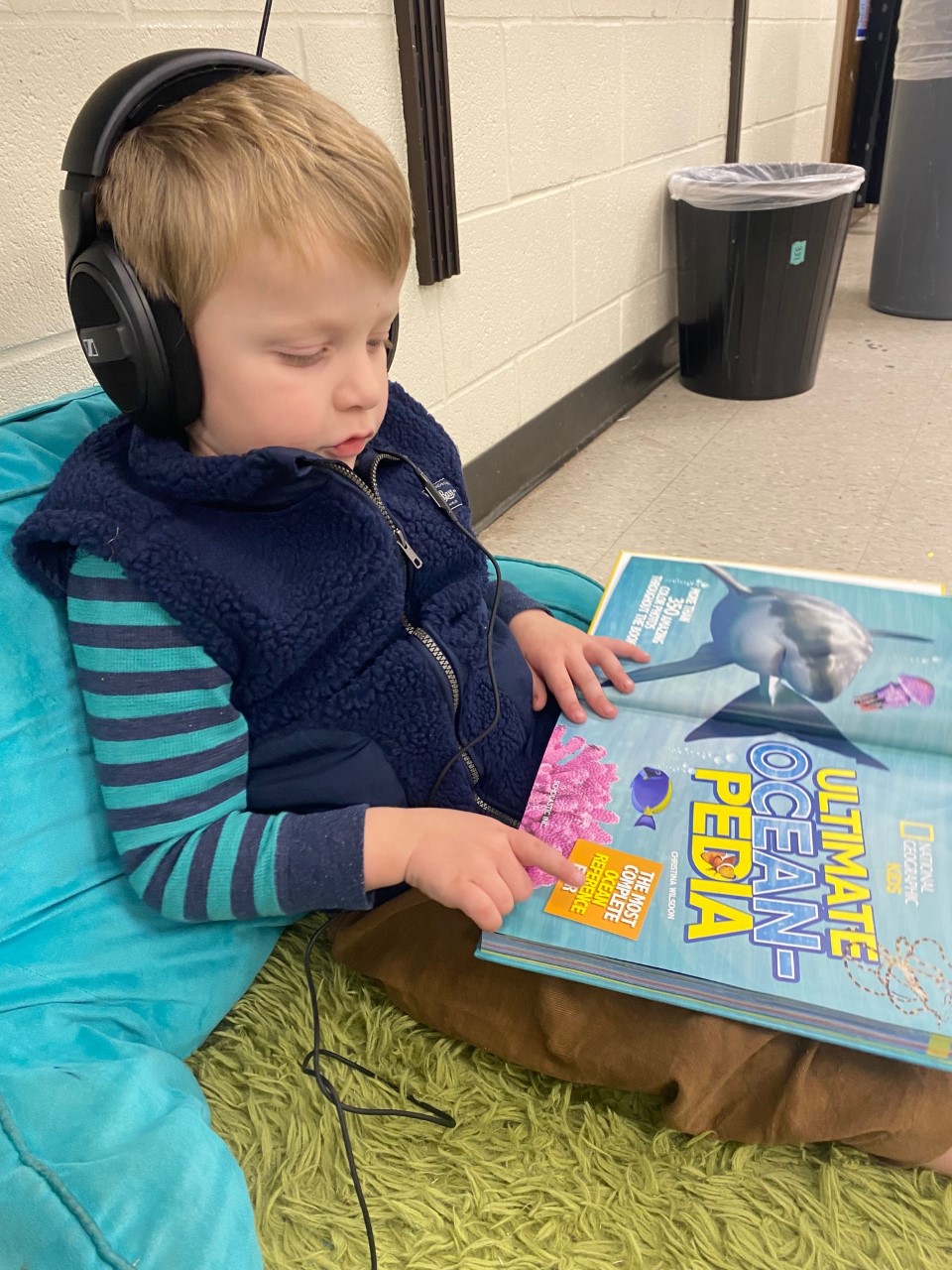
In honor of World Apraxia Day, I want to share my experience with this little-known speech disorder.
When my son was diagnosed with Apraxia of Speech at 18 months, I had no idea what it was. To be honest, two and a half years later, I still can’t really give you a medical dictionary definition of the disorder. I can, however, share some important lessons I’ve learned along the way. Please know, I am not a doctor, just a mama trying to navigate this new world of speech development, so if you do have specific questions or concerns, I encourage you to reach out to your pediatrician.
Trust Your Instincts
If you’ve ever seen the movie Rush Hour, you’ll remember the part where Chris Tucker, thinking there’s a language barrier, looks at Jackie Chan and very slowly and clearly asks, “Do you understand the words coming out of my mouth?” That’s what I used to think Brooks was mentally asking the rest of us. Around 16 months, Brooks would “talk” up a storm and then stare at me, waiting for me to reply or take action. It was obvious he knew exactly what he was saying, but I didn’t have a clue, and when I couldn’t help him, he would get super frustrated, understandably so.
Deep down, I knew something was a little off, so I did what any good mom would do and consulted Dr. Google. (I’d avoid that if you can!) Thankfully, I also have a dear friend who is a speech language pathologist, and after screening Brooks, she agreed he had a speech delay. Our pediatrician wasn’t as easily convinced, so I did have to push pretty hard for the referral, but it was absolutely worth it. As any SLP will tell you, early intervention is key. And hey, if I came across as a paranoid, overprotective mom, so be it. Won’t be the last time, I’m sure!
Be Patient
This one was really hard for me. Once we knew Brooks needed help, I wanted everything to fall into place lickity split. Unfortunately, everything about a speech disorder—from the referrals for treatment to the treatment itself—takes time. Apraxia, like most speech disorders, isn’t a quick fix. Therapy can take years, and sometimes it’s difficult to see improvements. We had to trust the process, which has tested my patience on more than one occasion.
Speech growth is kind of like weight loss—when you look in the mirror every day, you may not notice any changes, but when you run into someone you haven’t seen in a few months, they’re blown away. As a mom in the thick of it, speech improvements may be hard to hear, but don’t get discouraged. Taking videos of your child talking once a month can give you a tangible measure of growth and the motivation you need to stick with the therapy.
Build Your Team
Building a quality team is essential for speech development. Having a therapist and early interventionist you trust is obvious, but your team is bigger than just medical professionals. Get family, friends, teachers, and caretakers on board so everyone can help out. Now is not the time to be shy about what is going on.
Speech therapists use a ton of visual cues to remind patients of particular sounds, and it’s helpful if everyone learns them. One of our therapists would run the fingers of her right hand down her left arm and then tap her wrist to remind Brooks to make the beginning /s/ sound. Our older boys were more than happy to get in on the action, and pretty soon, our family looked like we were all a bunch of baseball coaches trying to signal Brooks to steal home. Consistency is key to speech development, so the more people you have in your corner reinforcing strategies, the better off you’ll be.
Change Your Focus
Instead of focusing on what your child can’t say, focus on what he or she can. Apraxia is a quirky disorder in that the symptoms can be different from child to child, and speech ability can often seem confusing. There’s often no rhyme or reason to what a child can say easily and what sound may be a challenge. Brooks still struggles with the beginning sounds for frog and cow, but he can tell you he wants to be a paleontologist, find a Baryonyx fossil, and play a glockenspiel without any problem. It makes no sense to us either, so we have learned to just roll with it and find joy in the successes.
Let It Go
This one is the hardest to do, but it may just be the most important. As moms of children with Apraxia, we have to let go of so many things—our timelines, our control, our thoughts of what should be. As someone who used to teach public speaking, it was hard for me to accept that Brooks will most likely never be a world-class orator. But as I let go of that idea, I had more room to see the endless possibilities of what he can be.
Now is not the time to hold on to pride or shame. Those things will lead to nothing but exhaustion and frustration. It’s ok to ask for help, and it’s ok to need a break. Apraxia is a journey full of ups and downs, and often it feels like there’s no end in sight. But if we can work to let go of the future and embrace the here and now, we will make it through.
It’s a lesson I still remind myself of every day.
Does your child have Apraxia? What tips would you add to the list?
 Katherine Bryant is a wife, mom, teacher, daughter, and friend just trying to figure out who she is and what she wants to be when she grows up. A graduate of Furman University and USC, she loves a cozy hooded sweatshirt, Papermate Flair pens, and a little coffee in her creamer. Katherine has lived in Columbia for 23 years. She and her husband have three sons, who love sports, trying new restaurants, and visiting Riverbanks Zoo.
Katherine Bryant is a wife, mom, teacher, daughter, and friend just trying to figure out who she is and what she wants to be when she grows up. A graduate of Furman University and USC, she loves a cozy hooded sweatshirt, Papermate Flair pens, and a little coffee in her creamer. Katherine has lived in Columbia for 23 years. She and her husband have three sons, who love sports, trying new restaurants, and visiting Riverbanks Zoo.














